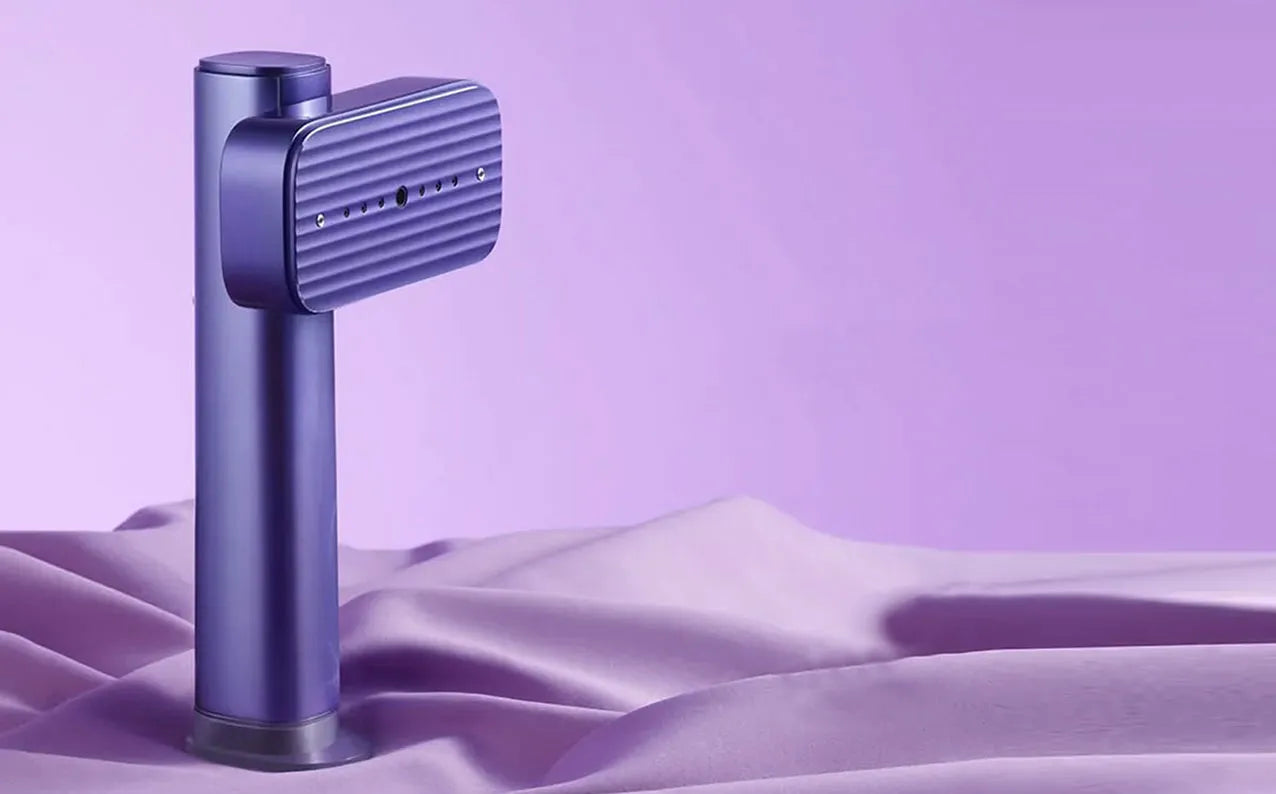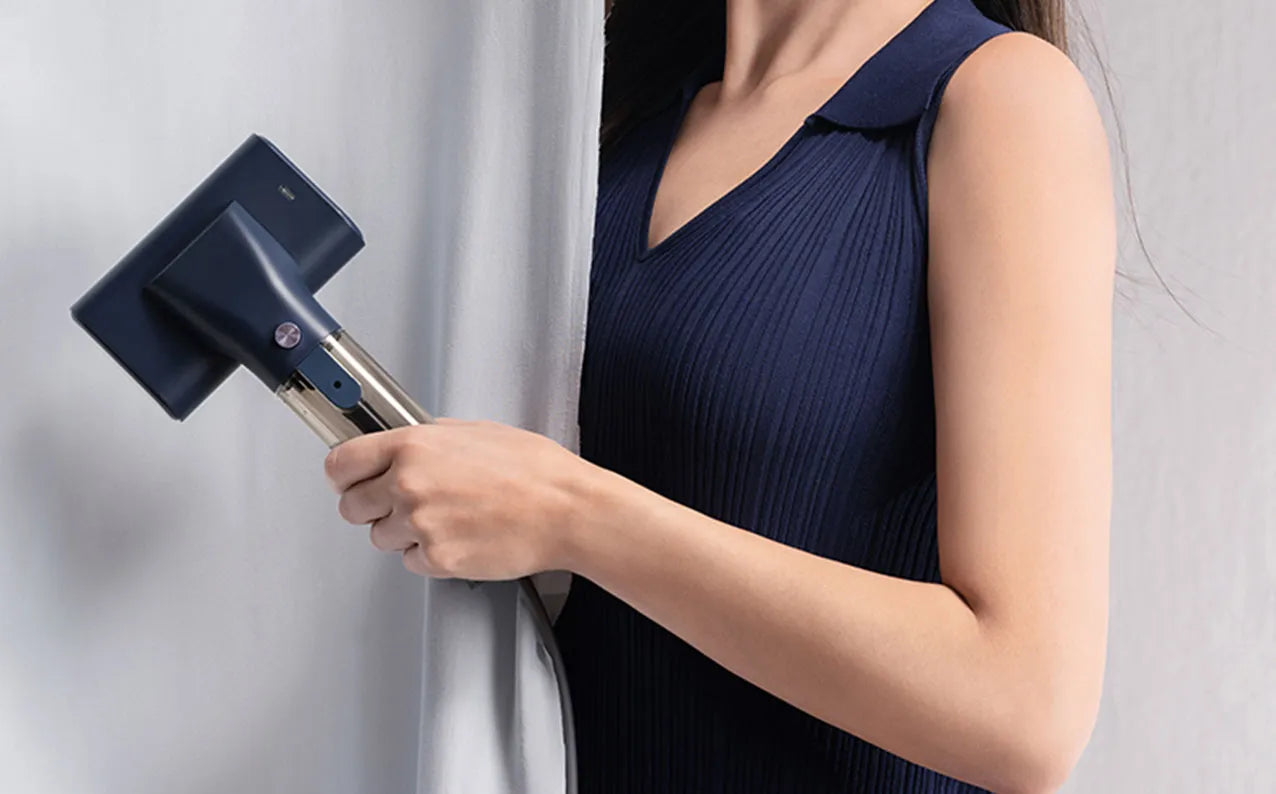I'm a management consultant who travels around the world for projects. Besides my computer, power supply and a bunch of business cards, there's one small item that I carry with me almost all the time: a hand steamer. You might write it off as a gimmick, but I think of it as my “my backup plan for looking sharp” Whether I’m at an airport, a client’s office or in a hotel lobby, I can usually fix a wrinkled shirt, jacket — even a curtain — in about ten minutes. It turns out to be a lot more useful than it sounds.
I often come across the parameters mentioned in product advertisements: lightweight, fast, and long-lasting. When I’m shopping, the specs you see most are “light, fast, long-lasting” — and they actually matter. Plenty of travel models truly focus on weight, heat-up time and run time. To give you a feel: you’ll commonly find units around 0.8 lb that heat in about 15 seconds, run roughly 10 minutes per fill, and accept global voltages — the exact numbers that make sense when you’re on the road.
Below, I will clearly list the key points, techniques and cautionary experiences that I have accumulated from years of practical experience, so that you can quickly refer to, compare and get started.
1.why do I prefer to use a hand steamer device more often than a portable electric iron?
To be honest, traditional portable irons often become a burden when traveling: they require finding a flat surface or an ironing board, and the hot plate may leave "stains" on silk or wool. Moreover, their size/weight is not necessarily much lighter than the steam device. Handheld steamers mainly use vertical steam to smooth wrinkles, eliminating the need for an ironing board and the hassle of wiping. They can handle clothes directly on the surface, are fast and cause little damage - this is extremely important for someone like me whose time is fragmented by meetings.
2.When choosing, the top five factors should be considered (I have turned this into my own "business trip checklist")
Every time I purchase equipment, I treat it as evaluating a small project. I treat buying gear like a mini project. These are the five things I check first — and why each one matters:
Preheating time (Heat-up): It can produce steam within about 15 seconds and can be used immediately, without wasting time waiting. Many travel models have the preheating function within the range of 10 to 20 seconds. This was the first figure I paid attention to.
Continuous steam release time: One water injection can continuously spray for 7 to 12 minutes, which is the most ideal. Ten minutes should be sufficient for emergency ironing of two to three formal garments. During the journey, you don't want to refill the water frequently.
Weight and Volume: I prefer lightweight machines in the 0.7 - 0.9 pound (approximately 300 - 400 grams) range. They fit best in the compartments of the carry-on bag or the side pocket of the handbag, and won't turn your luggage into a dumbbell. Lighter models are more convenient for traveling.
Power and Steam Intensity: For models operating within the 800-900W range, they can quickly generate "dry steam" without wetting the fabric. The power affects the stability and penetration power of the steam. This is particularly crucial when dealing with thick outerwear or denim fabrics.
Voltage and Safety: If you frequently travel across different countries, you must ensure that the device supports global voltages ranging from 100 to 240 volts. Otherwise, you will have to bring an additional transformer. The automatic power-off and leak-proof designs can also reduce safety concerns during your travels.
3. Practical Operations for Different Fabrics and Different Scenarios (I adopted the approach of "few actions, focus on results")
The following steps are the procedures I have repeatedly tested in hotels, cars, and backstage of events. The goal is: to be quick, reliable, and to avoid getting wet.
Cotton/Blend Shirt
Hang the shirt firmly and fasten the second or third button to prevent it from swinging.
Start from the neckline and move downwards. The steam should be applied in short sweeping motions. Do not stay in the same area for too long.
I start at the collar and sweep the hand steamer downward in short strokes — never hover in one spot so the fabric doesn’t get wet. For sleeves I run a few gentle passes along the length, then give the garment a quick shake so the fibers cool and settle.
Silk and lightweight fabrics
With silk or other delicate fabrics I hold the nozzle about 3–5 cm away and use short bursts — don’t stay on one spot. After steaming I lightly pat the fabric so it lays flat and to avoid water spots.
Wool / Suit Jacket
For a suit jacket I concentrate on the shoulder line and collar, steaming vertically in short bursts. Heavier areas can take a couple more passes, but I avoid lingering over seams so I don’t stress the stitching or lining.
Jeans and thick cotton
Denim and thick cotton usually need attention on both sides — I steam the front, flip and hit the back, and repeat stubborn spots. A steadier steam flow and a bit more power make this a lot easier.
They usually need to be treated on both sides. First, steam the front side, then turn it over and heat the back side.If a crease doesn’t come out the first time, I just run the steamer over it again. With heavier stuff like jeans or a wool coat, I’ve noticed a steady stream makes a big difference — the wrinkles give up a lot quicker.
4.Packing Tips for Business Trips and Airport Checks
When I fly, I always empty the tank before security. TSA doesn’t like liquids, so I carry it through dry and refill once I’m past the checkpoint. If the hand steamer works on 100–240V, all you really need is a tiny plug adapter — way easier than dragging a heavy transformer. I make a habit of checking voltage before the trip, because there’s nothing worse than scrambling for the right adapter in some hotel lobby. I keep mine in a small pouch; after using it, I wipe it down, leave the cap off to let it dry, and pack it up. Those little habits make it last longer.
5.Maintenance and Quick Fixes (Stuff I’ve Actually Tried)
If the steam starts to fade, nine times out of ten it’s mineral build-up. I just use distilled water and, if needed, run through the descaling steps in the manual. If the nozzle gets clogged, I unplug, let it cool off, and use the tool it came with or a cotton swab — never metal. That simple unplug-cool-clean move has bailed me out more than once when I was in a rush. Leaks usually happen when I’ve filled it too high or tilted it flat, so now I keep it upright or just a little angled and under the fill line. If water starts dripping, I check the level and the way I’m holding it — usually a tiny tilt fixes it. If it starts making weird noises or feels hotter than normal, I unplug it, let it rest, check the vents, and only call customer support if it still acts up.
6.Turning a Handheld Steamer into a Real Work Tool
I throw my hand steamer in my bag right next to my phone — it’s just part of what I grab when I head out. At home, I practice a couple quick passes so I know the right distance and pace for each fabric. Way better than fumbling with it in front of a client. Those little practice runs have saved me from some awkward moments. And it’s not only for shirts — scarves, curtains, throw pillows, even fabric swatches look sharper after a quick steam. Just running it down some wrinkled curtains can change the whole vibe of a room. Specs on paper are fine, but what really counts is how it handles day to day. Whenever I can, I test it in real situations because numbers don’t always match real life.
7.Some Notes About Nesugar (Just My Own Experience, Not a Pitch)
I’ve gone through quite a few hand steamers, and I’ve tried a couple from Nesugar. The travel ones I used were super light, heated up in about 15 seconds, and gave me close to ten minutes of steady steam — good enough for travel. That said, the results really depend on the model, how full you make the tank, and what fabric you’re working with. If exact numbers matter to you, definitely check the product page.
8.A Few Emergency Saves That Won Me Over
One time during a 40-minute layover, I used the lounge bathroom to steam my shirt and walked into dinner looking like I’d planned it. My client laughed and said I must have rehearsed. Another time at an open house, the curtains looked sad and wrinkled. A quick steam made the place feel brighter, and buyers definitely noticed. After a closing, I freshened my coat in under ten minutes and showed up at a family party looking sharp instead of worn out.
9.Bottom Line: Why a Handheld Steamer Is Worth It
If you’re on the move a lot, a hand steamer is more than just a way to smooth clothes. It’s a quick fix for those little emergencies that can ruin your look. I learned that the hard way when my nozzle clogged right before a client lunch. Since then, I only use distilled water, empty the tank when I’m done, and keep a spare hook in my glove box. More than once, that routine has saved my jacket. Bottom line: look for fast heat-up, steady steam, light weight, easy care, and the right voltage. And don’t just trust the ad copy — try it yourself and see how it works for your life.






